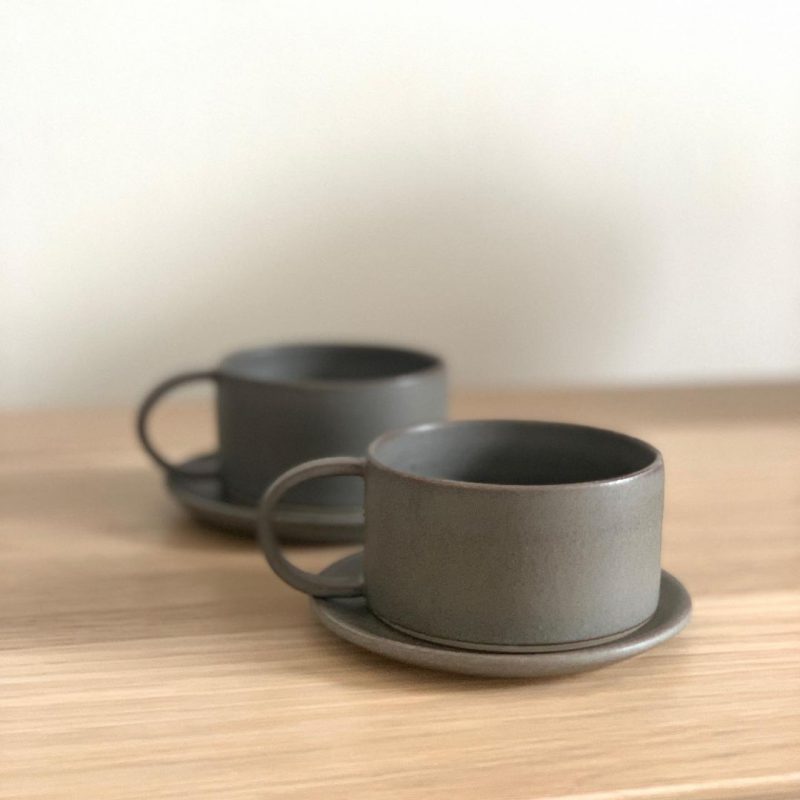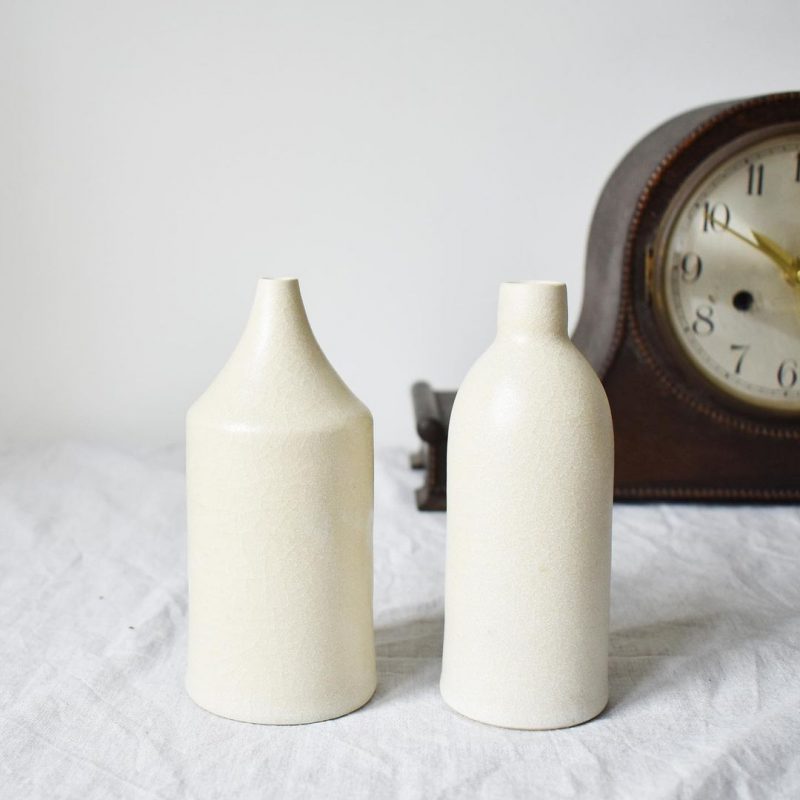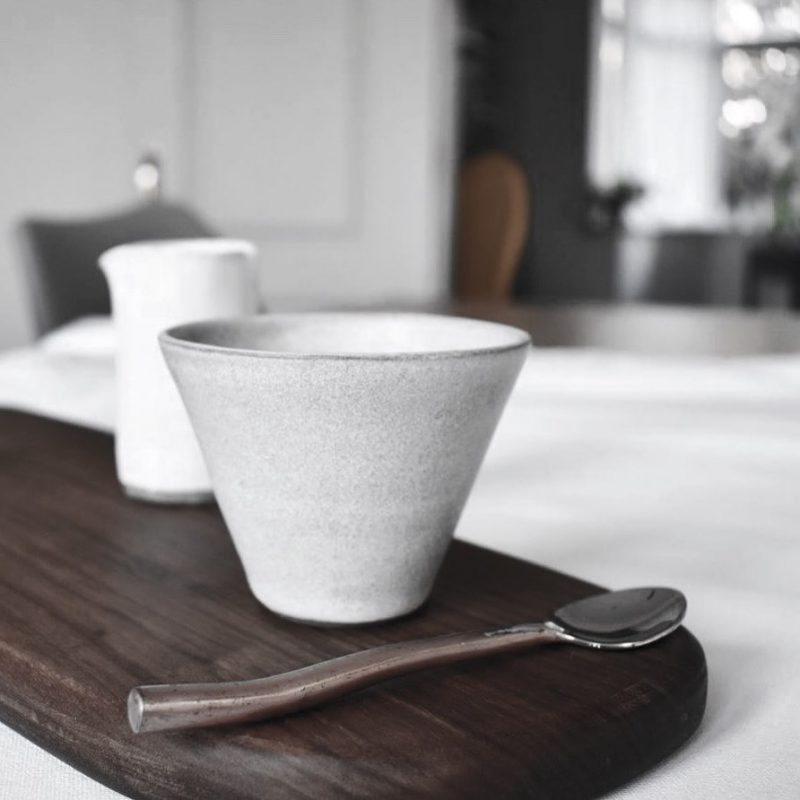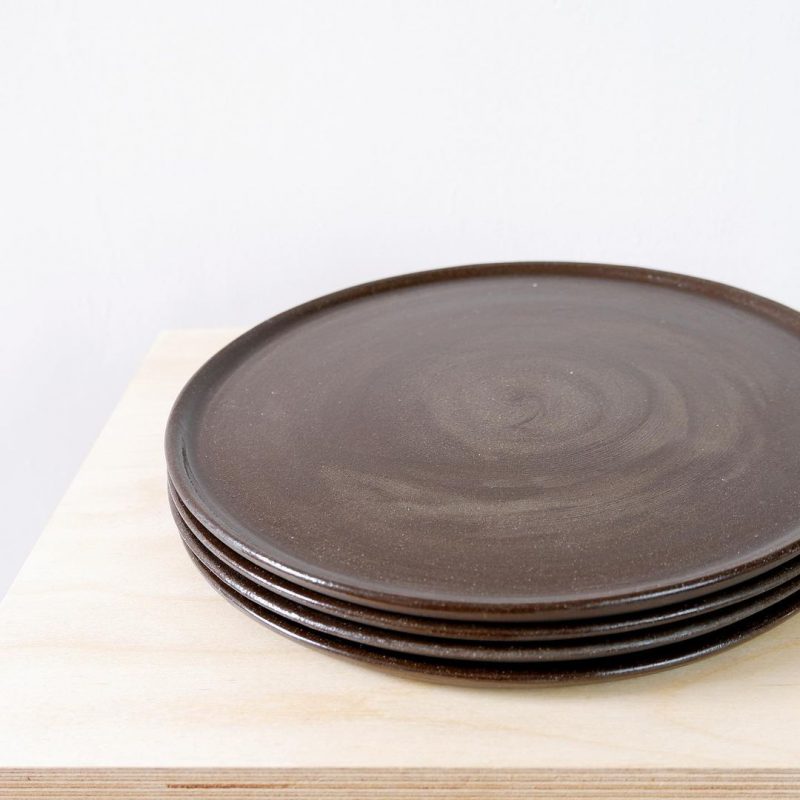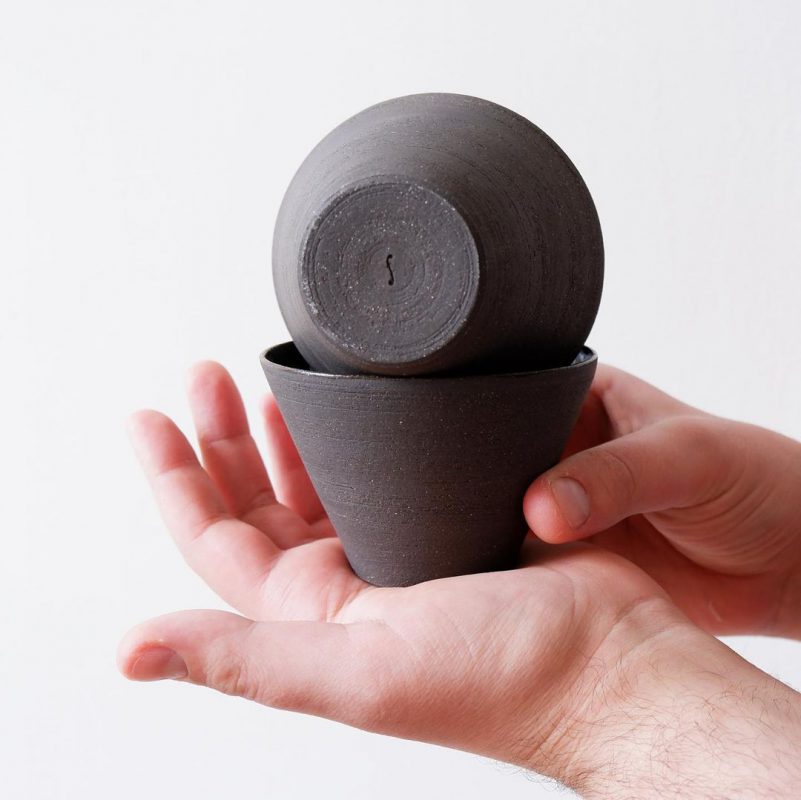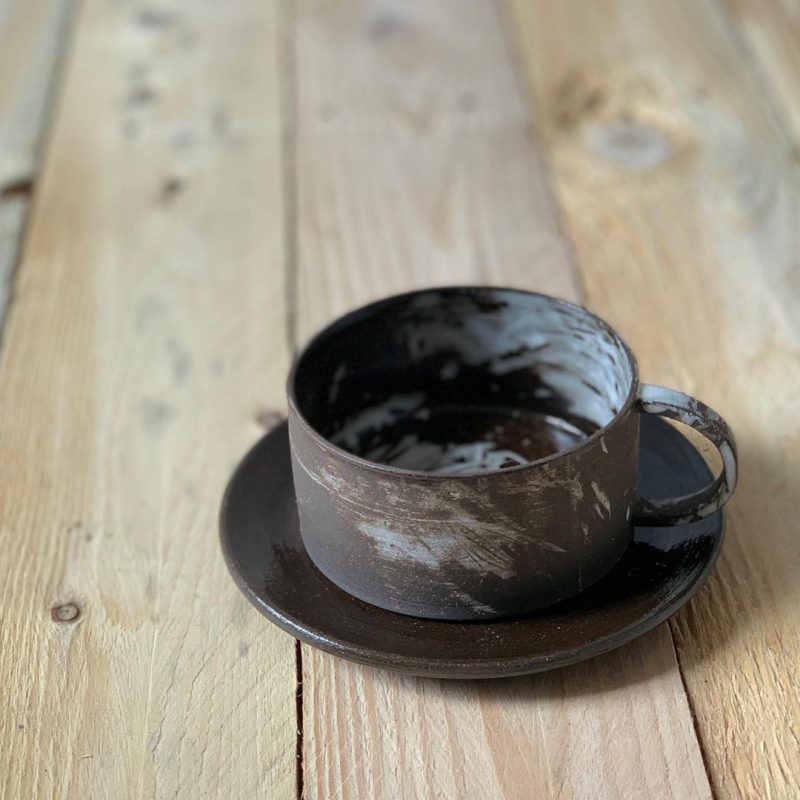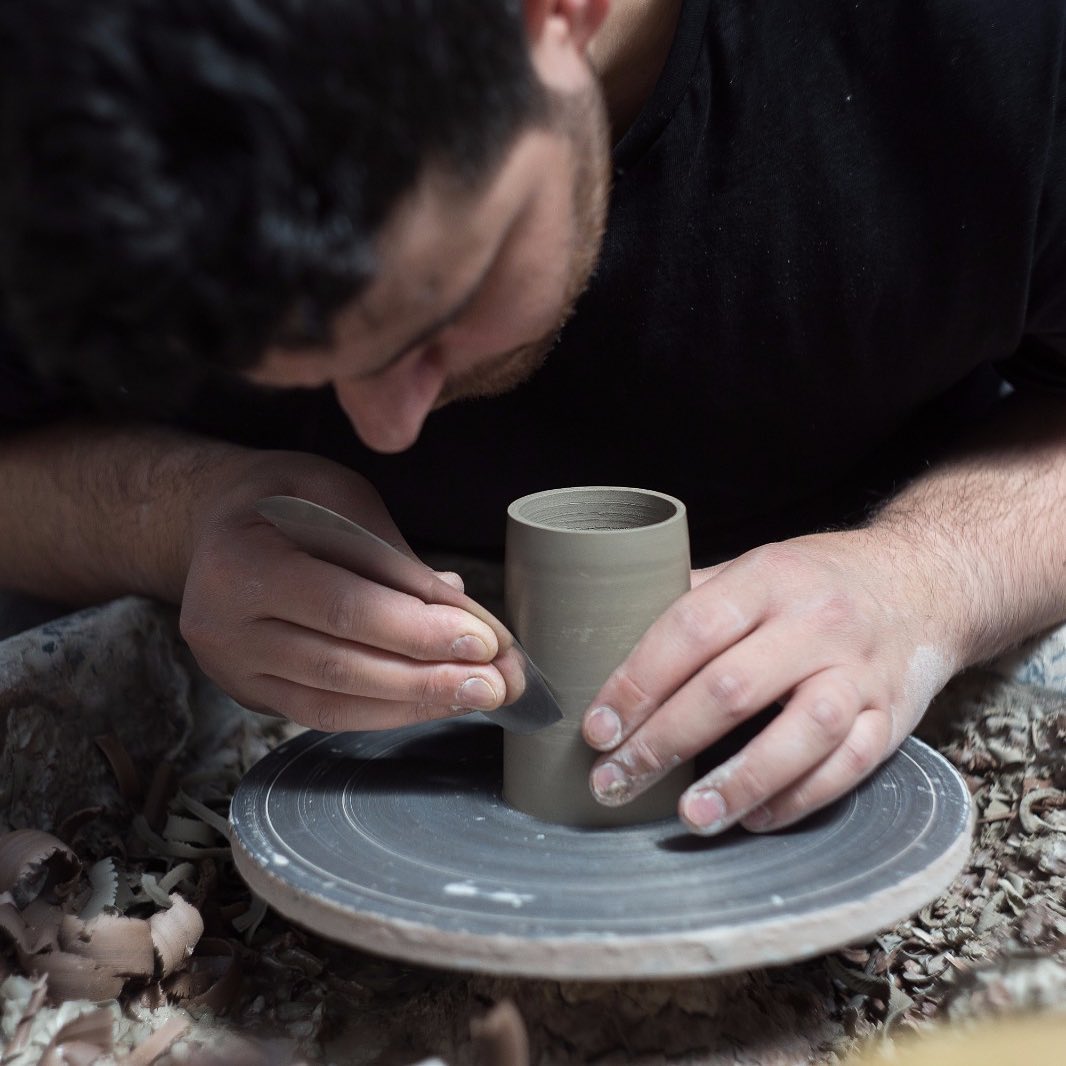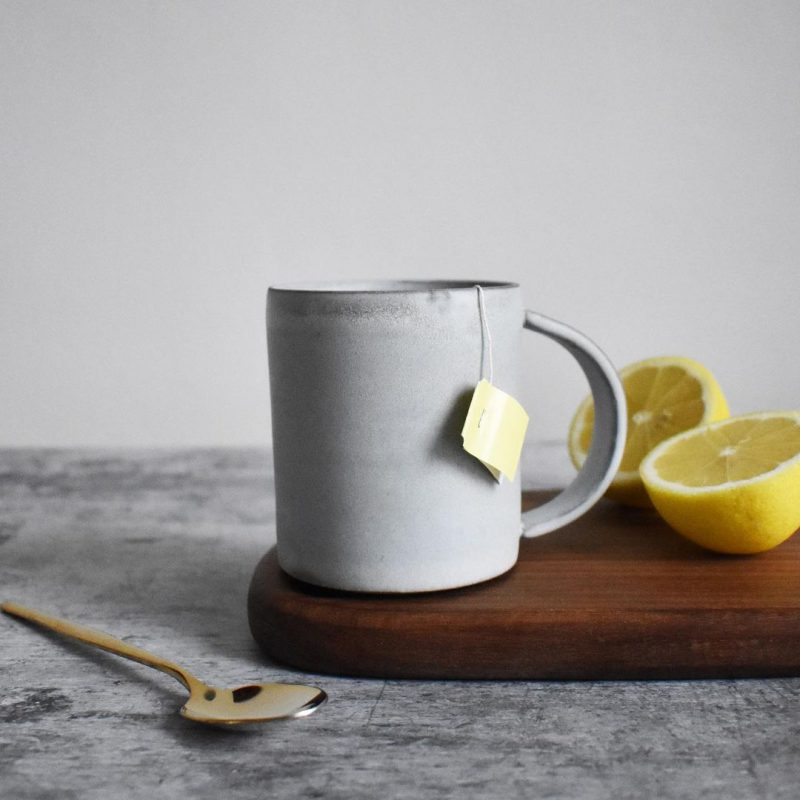
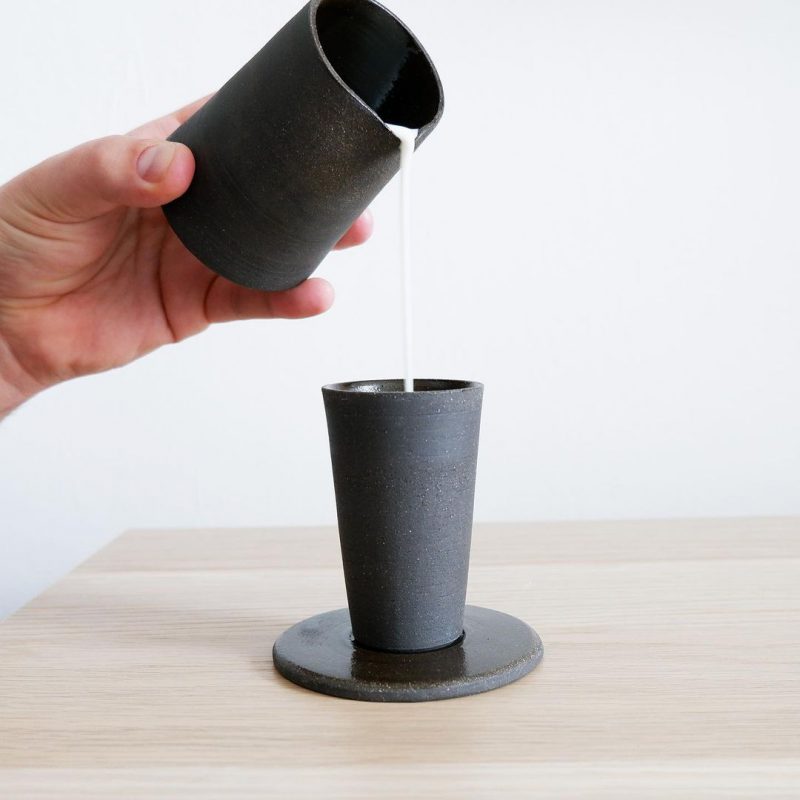
Simon, originally from Italy, started his journey to produce ceramics in the UK in 2018.
After quitting his profession as a violinist, he moved to England in 2004, and for a while, he was quite busy with college and a full-time job.
Looking back on that time, he said, “I knew I needed a change”. イタリア出身のシモンさんが、イギリスで本格的に陶芸を学びはじめたのは2018年のこと。
プロのバイオリニストという職業を辞め、2004年にイギリスに移り住んでからしばらくは、大学に通ったりフルタイムで仕事したりと、忙しい日々を送っていました。元々、4歳から始めたバイオリンで、長くプロの演奏家としてイタリアで活動していた彼。「いとこに会うため」だったはずのイギリスへの移住は、彼にとって大きな転機となりました。
「変化が必要だと思っていた」と、シモンさんは当時を振り返ります。
Simon has always had a passion for art, and no matter what he does, artistic inspiration comes to him.
As he moved forward with his interests, he learned and practised arts such as graphic design, architecture and laser cutting techniques, and finally encountered the field of ceramics.
音楽だけでなく、もともとアートへの指向が強く、何をしていても芸術的なインスピレーションが湧いてくるというシモンさん。
興味の赴くまま、グラフィックデザインや建築、レーザーカッティングの技術など、アートへの学びや実践を続けていく中で、最後に行き着いたのが陶芸でした。
“At first, it was just a lump of clay, but it gradually became a bowl in my hands.” 「最初はただの粘土だった塊が、手の中でだんだん器になっていくんだ」
Simon says that he can still vividly picture the first time he tried his hand at pottery.
He was surprised but moreover pleased, to be able to create an object with his own hands based on the ideal shapes and lines he had only seen in his mind.
初めて陶芸にチャレンジした時のことを、シモンさんは今でも鮮明に思い出せると言います。
頭の中にしかなかった理想の形や線が、自分の両手で現実に物体として作り出せることが、衝撃的で、そして何よりとても嬉しかったとも。
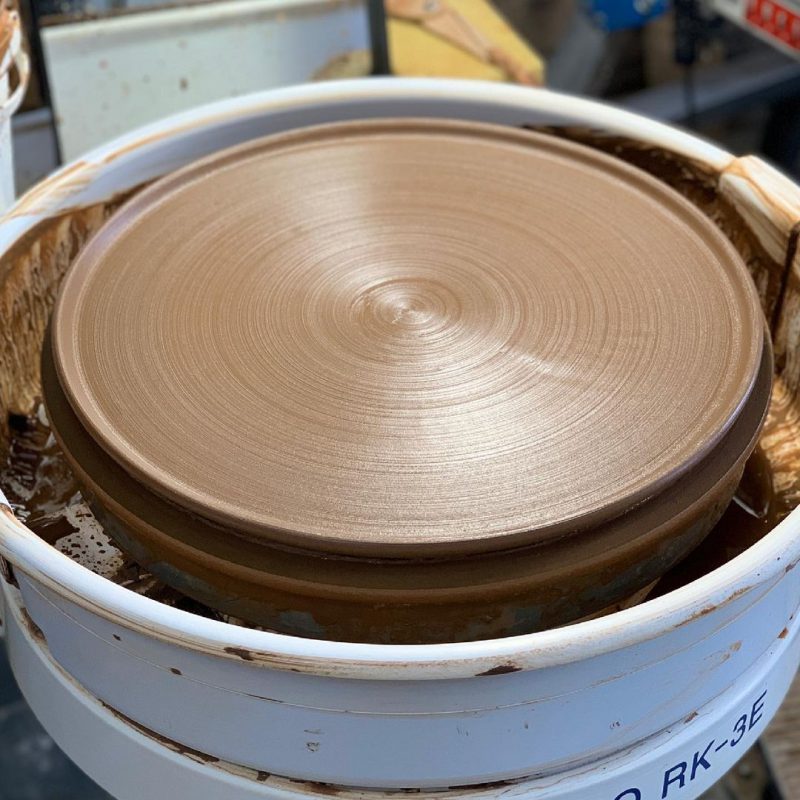
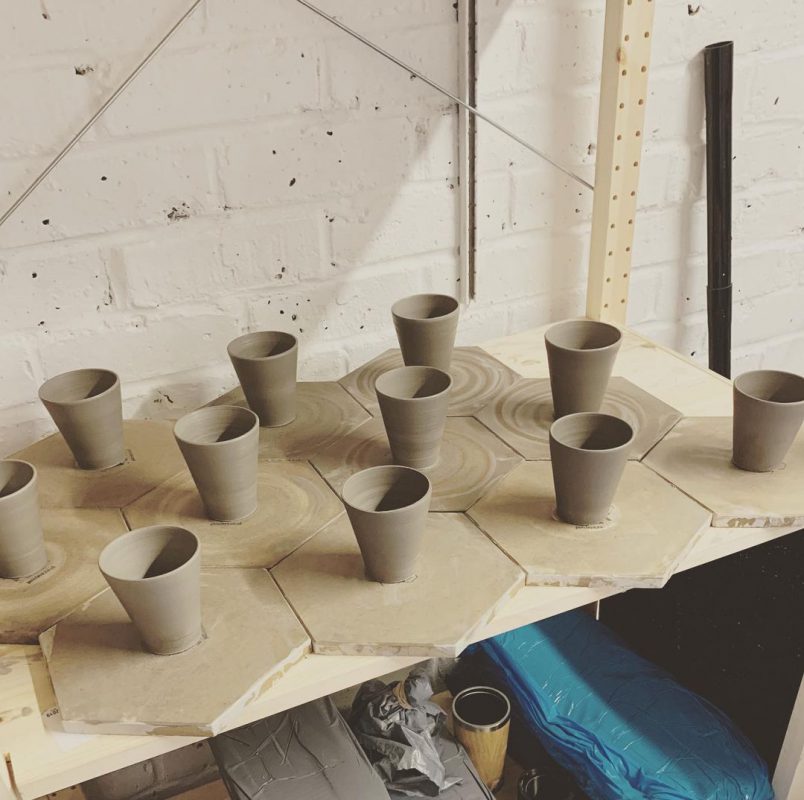
His works focus on tableware, such as bowls, side plates, teacups and espresso cups.
Milk jugs and vases are also popular.
作品はテーブルウェアを中心に、お皿やサイドプレート、ティーカップやエスプレッソカップを作っています。
ミルクジャグや花瓶なども人気。
All of them have a minimalistic beauty, sophisticated yet functional enough to be used comfortably in any situation or by any person.
“I take my inspiration from architectures sometimes nature. I love simple, elegant line.”
どの作品もミニマルなデザインで、洗練されていながらも、シーンや人を選ばず気持ちよく使える機能性を持っています。
建築物や自然からインスピレーションを受けることが多いというシモンさん。「シンプルでエレガントな線に、特に惹かれるんです」と目を輝かせます。
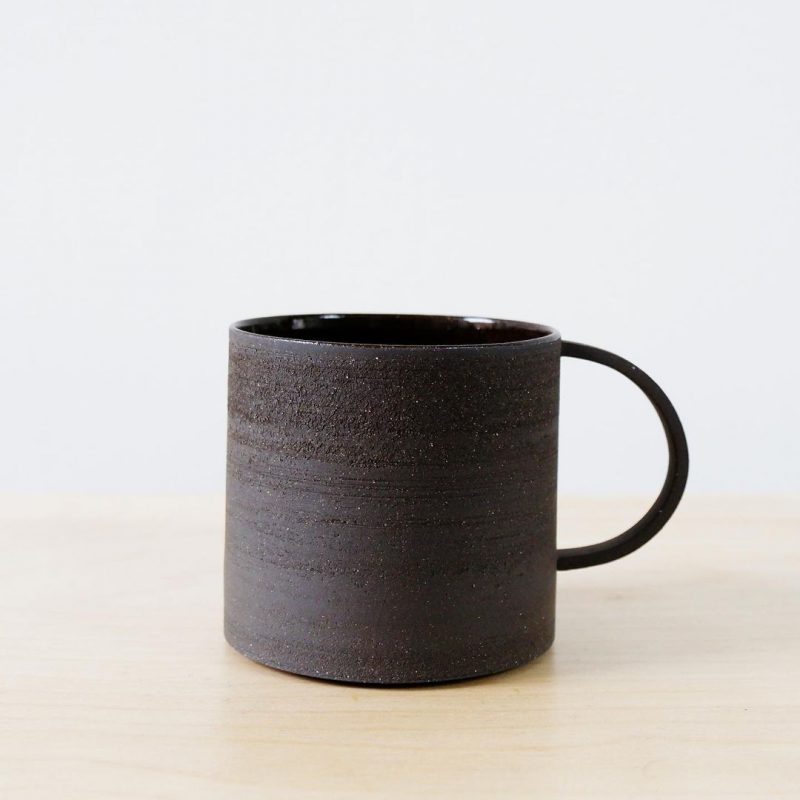
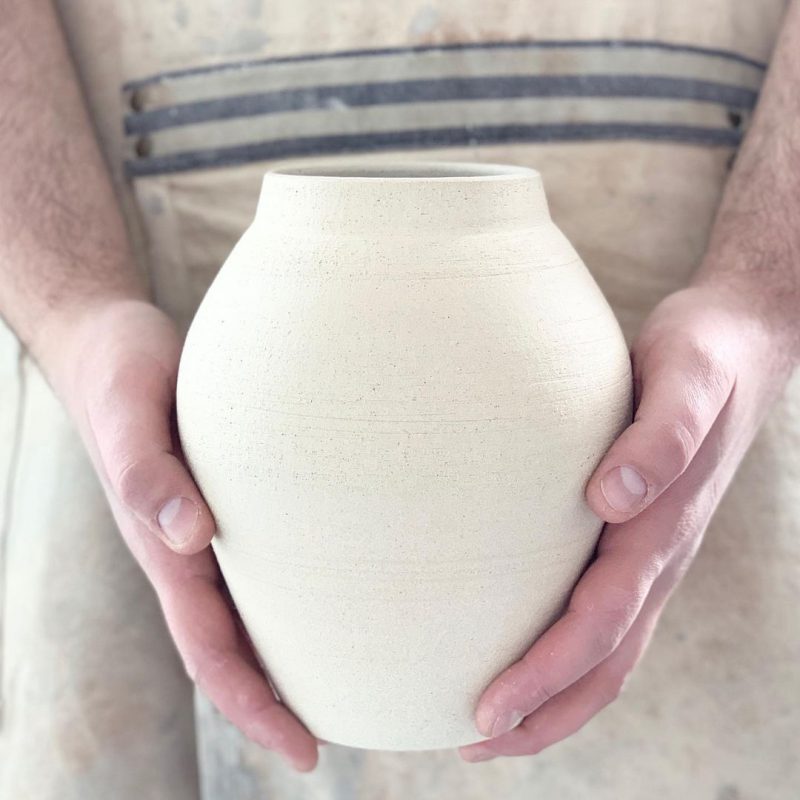
Simon mainly uses a “wheel” to create these works.
He really enjoys the feeling of the clay on his fingertips, and creating something new from it when he uses the wheel, he says.
これらの作品づくりでは主に「ろくろ」を使います。
学生の頃に初めて触れた粘土の感触は、あまり好きではなかったというシモンさん。しかし、ろくろを使いはじめると、その感情が変化します。
「ろくろを使ったときに指先で感じる泥の感触もふくめて、ろくろで新たな作品を生み出すということが、今は本当に大好きになりました」
He also mentioned that wheel-throwing has a positive effect on his Multiple Sclerosis, which causes problems with movement and cognition.
“The wheel helps me focus and better control my body,” he explains,
“It is helping me more than any medicine or therapy I’ve ever taken. I wouldn’t trade it for anything in the world.”
The sophistication of Simon’s works does not remind us of his disease at all. Rather, you will discover that his craftsmanship and passion dwell in them.
実はシモンさんは、子供の頃に「多発性硬化症」と診断されました。動作や認知に影響が出てしまう神経系の病気で、彼の場合は全身と手先の不調やめまいなどの症状が出たり、悪い時はほとんど動けなくなり1週間ほど安静にする必要があったといいます。
「幸い、最近はそこまでの症状は出なくなったけどね」、と笑うシモンさん。曰く、この持病にとっても、ろくろは良い効果があるそう。
「ろくろを回すと、集中力が高まって、うまく身体をコントロールできるようになるんです」
彼が生み出す作品の精巧さには、病気にもポジティブに向き合う彼の情熱と職人技が宿ります。
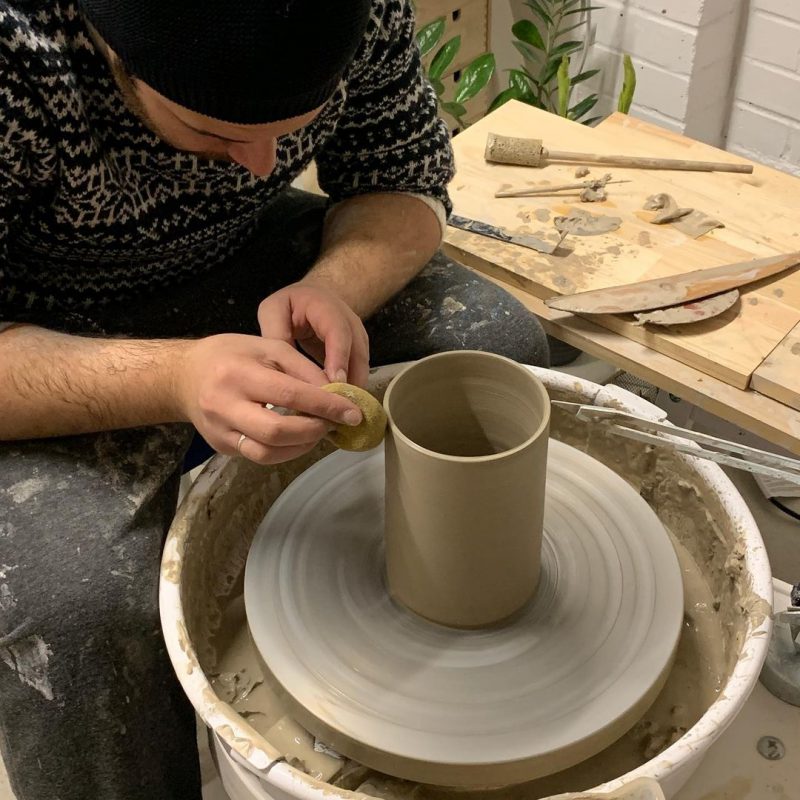
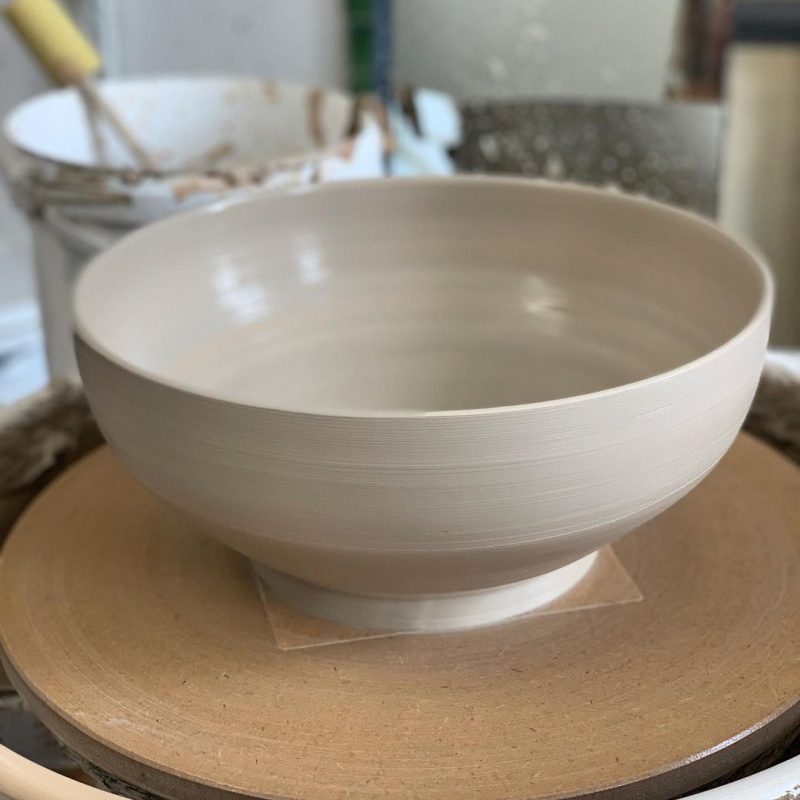
He is also fond of using his brass ribs and his simple rectangular metal rib, which is a tool-set to smooth and adjust the depth and shape of his work.
As well as that, he loves to use a Bison trimming tool as it makes trimming some pieces easier.
These tools help him to create new designs that are simple, functional, and visually appealing.
“I like straights sharp lines and I try to worded myself daily to create thinner and thinner.”
ろくろ以外では、深さや形を調整するための道具である、真鍮製のへらと、四角い金属のへらを使うのがお気に入り。
表面を滑らかにしたり凹凸をつけたりする加工にとても便利なんだとか。
整形にはバイソンのトリミングツールを愛用している、とも教えてくれました。
これらを使い分けて、シンプルで機能的で、見た目にも新しいデザインが形づくられていきます。
「直線的でシャープな線が好きで、また、できる限り薄く成形することを意識しています」
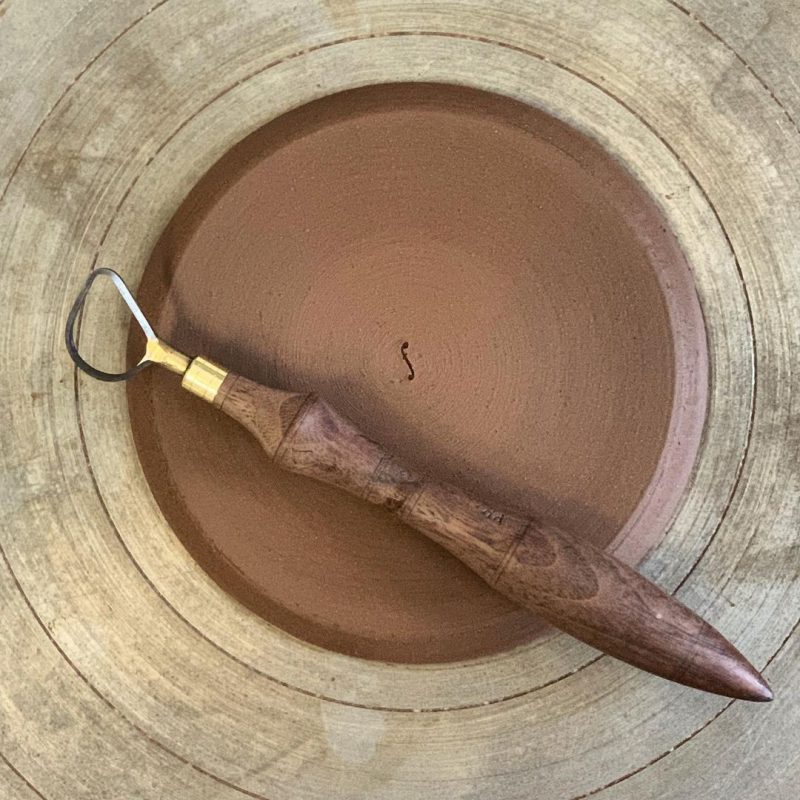
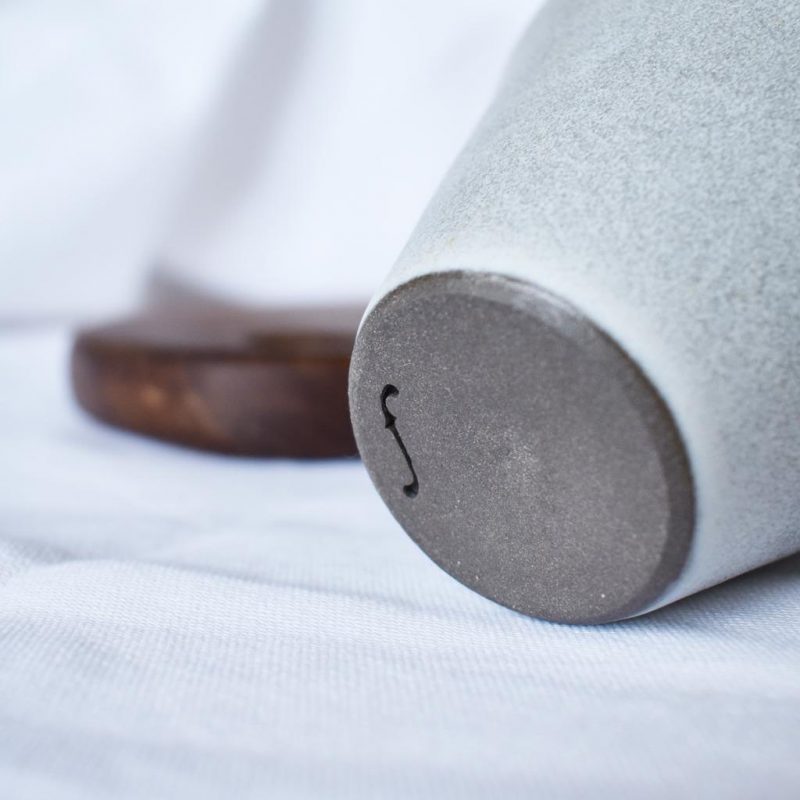
Whether he was a violinist in the past or a potter today, Simon is aware of the importance of constant improvement.
For example, he makes almost all of his glazes, which influence the colour and texture of the surface and therefore determine the finish of all pieces.
It often takes several months to complete a glaze that he is satisfied with, as he repeatedly tests his own mixing of raw materials and oxides.
バイオリニストだった昔も陶芸家である現在も、常に向上心を持ち続けることを意識しているというシモンさん。
例えば、表面の色味や質感を左右するため、仕上がりに重要な役割を持つ釉薬(ゆうやく)は、ほぼすべてを自作しているそう。
原料と酸化物の調合を何度も試し、納得のいく釉薬が完成するまでに数ヶ月を要すことも多いとか・・・。
The exquisite colours and subtle contrast between glossy and matte textures which are his unique style, are the result of his exploration of glazes.
His dedication to detail and hard work in pottery, overlaps with his past as a violinist who repeatedly practiced day and night in pursuit of the ideal tone.
絶妙な色合いと、ツヤとマットな質感のさりげないコントラスト。そんな作風は、彼の釉薬への探究心が生んだものでした。
どんなに時間をかけても、細部にこだわって研鑽を続ける姿は、日夜練習を繰り返して理想の音色を追い求めるバイオリニストとしての姿にも重なる部分があるかもしれません。
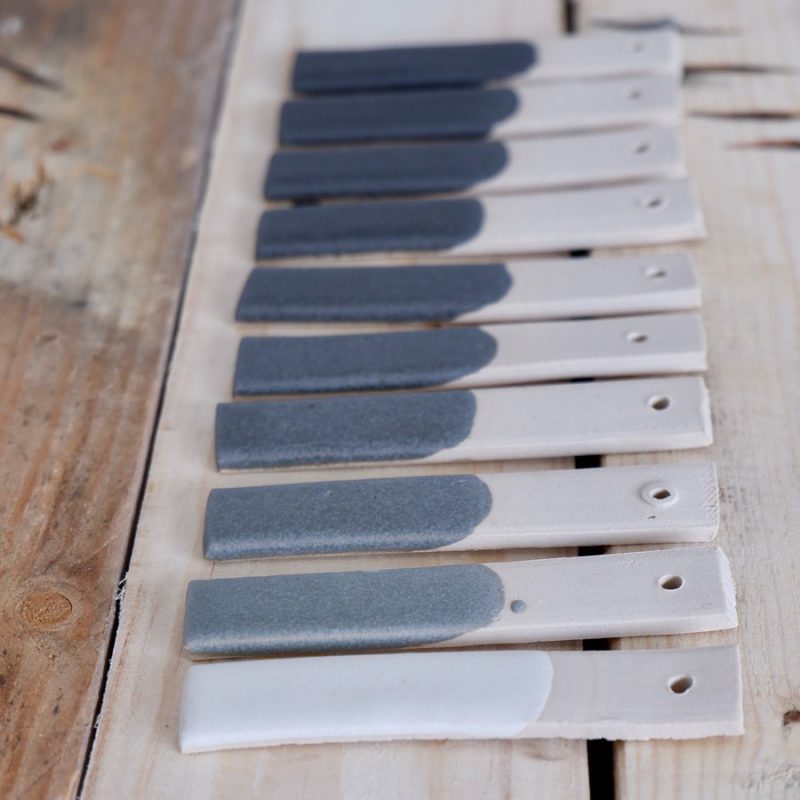
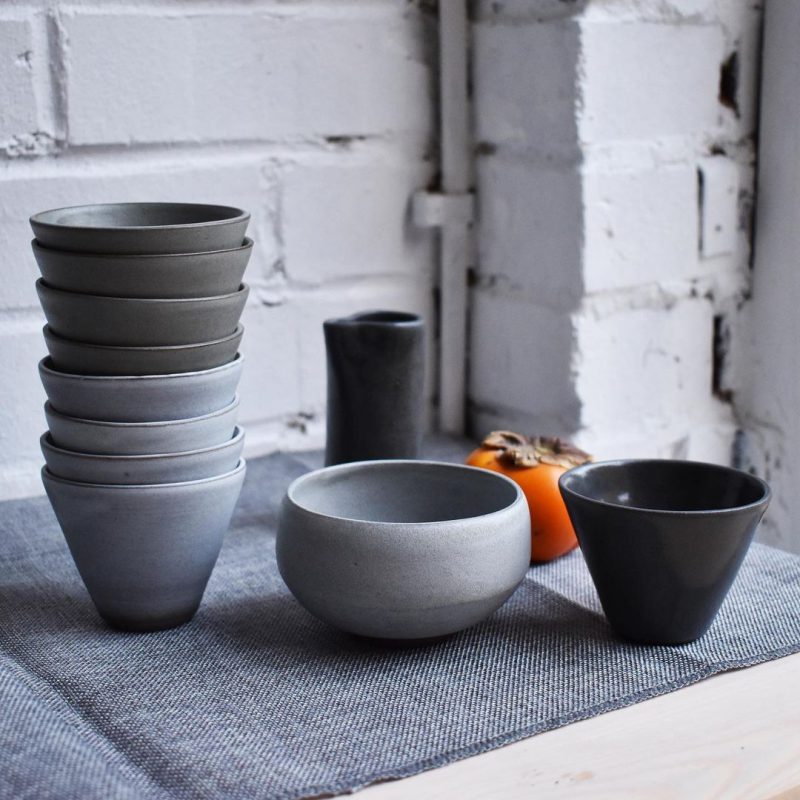
“I believe we should all try to preserve handmade something,” Simon said.
“We’re losing and forgetting our roots and we rely on machinery too much. It’s nice not to forget that we’re capable of making anything by hand.”
「もっと”手仕事”を大事にするべきだと思う」。シモンさんは言います。
今は、当たり前のように工場で大量生産できる便利な世の中になったけど、人間はもともと、自分たちの手で新たなものを生み出し、自分たちの手で必要な量を作ることができたはずだ、と。
Handcrafted works are not perfect like industrial products. However, that is exactly his expectation of the work.
“Each piece may be slightly different in dimension and colour, depending on the technique used to create it, and all may have slight imperfections.
This, to me, is what makes something unique and different from a machine-made pot.”
「私の作品は工業製品のように完璧ではありません。寸法や色が若干異なり、わずかな欠点があるかもしれません。これが私にとっては、機械で作られた陶器とは違う、ユニークなものを作っているということなのです」
Moved from Italy to the UK, and changed his profession.
Believing in keeping traditions alive, he is always staying positive and not afraid to innovate to move forward.
イタリアからイギリスに移り、そして職業も変えてきたシモンさん。
「伝統を守ることを信条としている」と語る彼は、どこまでもまっすぐで、そして、何よりも、前に進むための変化を恐れません。
Changing and not changing.
Respecting our roots and heritage as human beings can make us value ourselves more moving forward.
When I touch Simon’s beautiful cup, I can sense such a message even without words.
変わっていくこと、変わらないこと。
人間としての本質やルーツを大切にすることは、自分を大切にすることにもつながります。
シモンさんの美しいカップを手にすると、それを言葉にしなくても、そんなメッセージが伝わってくるような気がしてきます。
